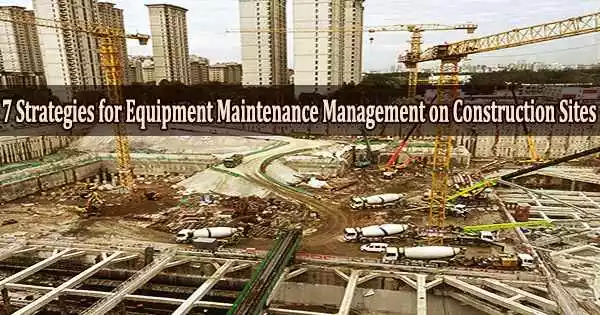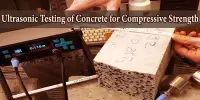It goes without saying that the machinery employed by construction companies is pricy, complicated, and essential for completing projects within the allotted time frames. Even smaller construction companies must spend thousands of dollars on the necessary equipment, as opposed to larger companies who invest tens of thousands or even millions of dollars.
Even though it might take years to recoup the expenditures of such technology, if it isn’t installed, used, or maintained correctly, the job could be significantly hampered. As a result, there may be unscheduled equipment outages, malfunctions, overheating, workplace accidents, and even the early demise of the machines. In light of this, let’s examine how maintenance management benefits and a few maintenance management tactics for construction companies.
Maintenance management of the construction equipment brings numerous benefits for the organizations.
Equipment maintenance management can help construction firms:
- Minimize unplanned machine downtime
- Reduce workplace injuries due to malfunctioning machinery
- Plan, schedule, and assign maintenance tasks based on events or periodically
- Manage all the equipment, vendors, and spare parts effectively
- Ensure compliance with regulations
- Prevent disruptions and deliver projects on schedule
- Improve asset longevity
- Reduce repair and replacement costs
- Ensure that the pieces of machinery are performing optimally
All of the aforementioned, when combined with thorough preventative maintenance planning, can greatly lower maintenance costs later on, lower the need for replacements, and guarantee that construction site activities operate smoothly.
With the “why” out of the way, let’s take a look at the ‘how” of maintenance management in construction firms.
Ensuring maintenance of construction equipment:
Make an inventory of assets that require maintenance
Organizations must make a list of all their equipment before beginning maintenance management. Any specific construction company needs to be aware of the assets it owns, how many of them it has, where they are located, whether it needs to do proactive or reactive maintenance, the manufacturer’s instructions, manuals, work history, and other relevant data.
While managers might think they already know this, if they want effective maintenance of the complex and expensive equipment, making a comprehensive list will help in the future.
All of this might seem overwhelming, but it’s the starting point for effective maintenance management for construction firms. Moreover, many tools can help with this (as well as maintenance management) such as an effective CMMS software for construction firms. It can help them digitize, organize, and keep all the information in a centralized location.
Involve both equipment operators and the maintenance team
The maintenance crew and equipment operators, besides the manufacturers, have the most knowledge of the machinery. Organizations can determine which equipment needs proactive maintenance, which areas need more attention than others, and which areas might present issues by including them in the maintenance management process. Incorporating their suggestions and making the required adjustments can help construction companies develop effective maintenance management.
Create proper equipment maintenance checklists
One of the most crucial measures for guaranteeing efficient maintenance management is the creation of thorough and practical checklists. While businesses can use the easily accessible online checklists that can be downloaded, a different strategy is far more successful.
Since every construction company is unique, checklists must be tailored to the specifications of the equipment. You may simply use the online templates as starting points and adapt them to suit your needs. Each piece of equipment has unique requirements, capacities, specifications, and restrictions, and each must be serviced or maintained in a particular way.
Create, schedule, and assign preventive maintenance tasks
Preventive maintenance, often known as preventative care, refers to performing maintenance procedures even before problems arise. Reactive maintenance, on the other hand, involves servicing the equipment after a problem arises.
However, more construction companies are embracing preventive maintenance due to its many advantages, including a decrease in unplanned equipment downtime, a reduction in workplace accidents, a maintenance of productivity, and a simplification of asset repairs.
Maintenance managers may easily develop, schedule, and assign appropriate activities to the maintenance team members based on checklists and equipment needs. These can be based on actual occurrences or regular activities like checking for leaks, cleaning, lubrication, and documenting fluid levels. To ensure that the equipment is operating effectively, it is also important to monitor the progress and follow up on these duties.
Leave room for modifications
Because the environment in which construction equipment operates isn’t always ideal, maintenance procedures for these specific machines may need to be altered. For instance, air filters may need to be changed frequently in construction equipment used in sandy locations. Remember that in order to increase the equipment’s longevity, such alterations will need to be done and they must be dealt with quickly.
Use manufacturers’ manuals, guidelines, and recommendations
As mentioned before, the manufacturer probably knows the equipment they’ve created better than anyone in a construction firm it has spent millions of dollars in research and development, after all!
The device comes with a variety of manuals and other materials from the manufacturer. These include installation instructions, maintenance advice, troubleshooting advice, and more. Incorporating the manufacturer’s advice into the organization’s maintenance management plans can reduce expenses in the long run because the manufacturer is aware of what works and what doesn’t for their equipment.
Educate both equipment operators and maintenance technicians
A piece of equipment is as good as its operator and how well the person uses it. The equipment can function better, cause fewer problems, and make the environment safer when it is used correctly. The machine operators must know the ins and outs of the equipment they are handling.
Whether it’s a new piece of equipment introduced or a new operator, providing training is a must. Moreover, making such sessions open to those who need a refresher is a good idea as well.
Maintenance technicians need to know even more about how the machines operate, why frequent issues arise, how to fix them, when maintenance is necessary, and other things. Through training sessions, such important information can be provided to the appropriate maintenance technicians.
















